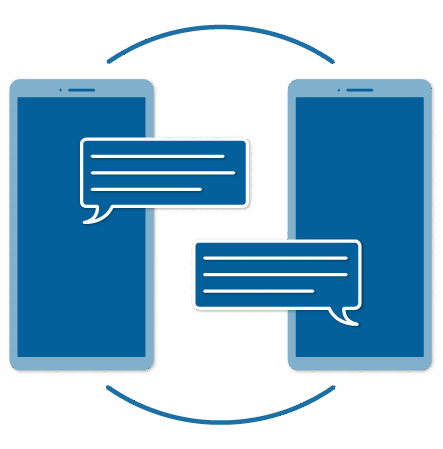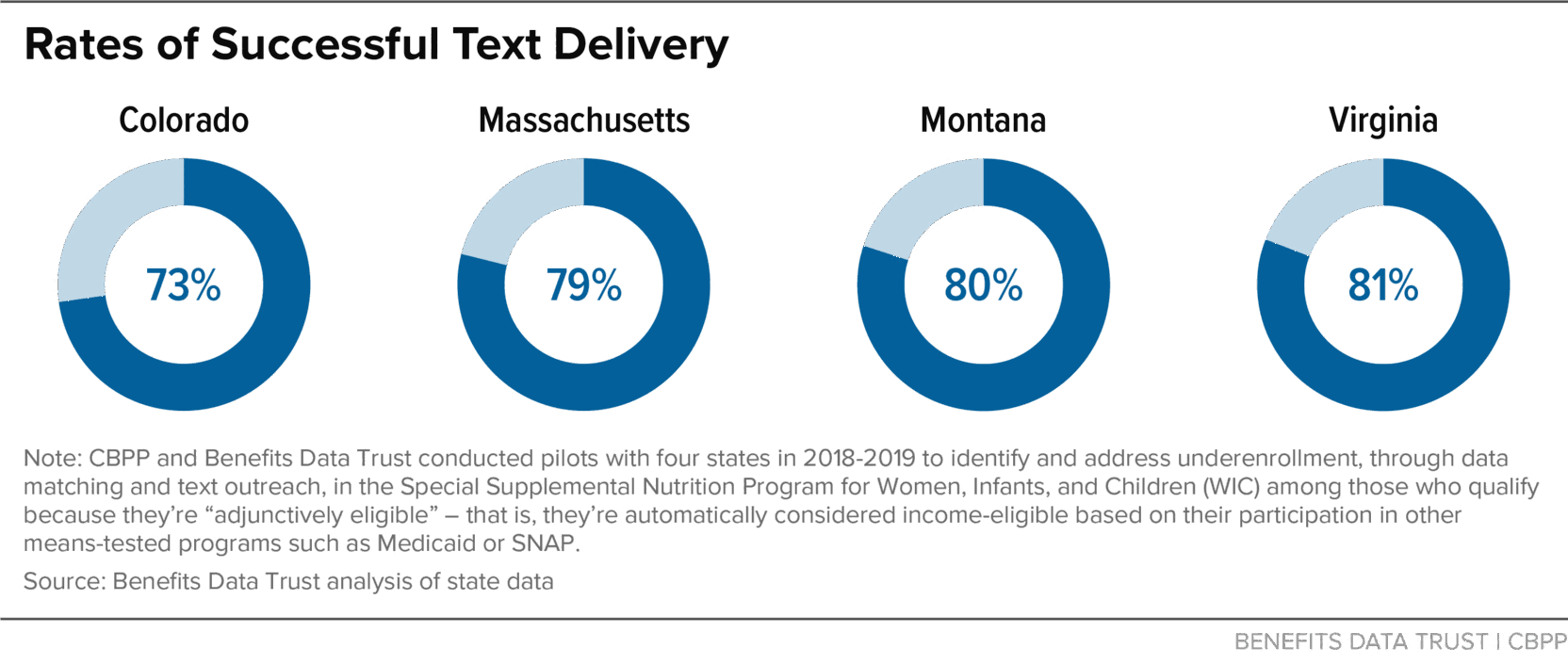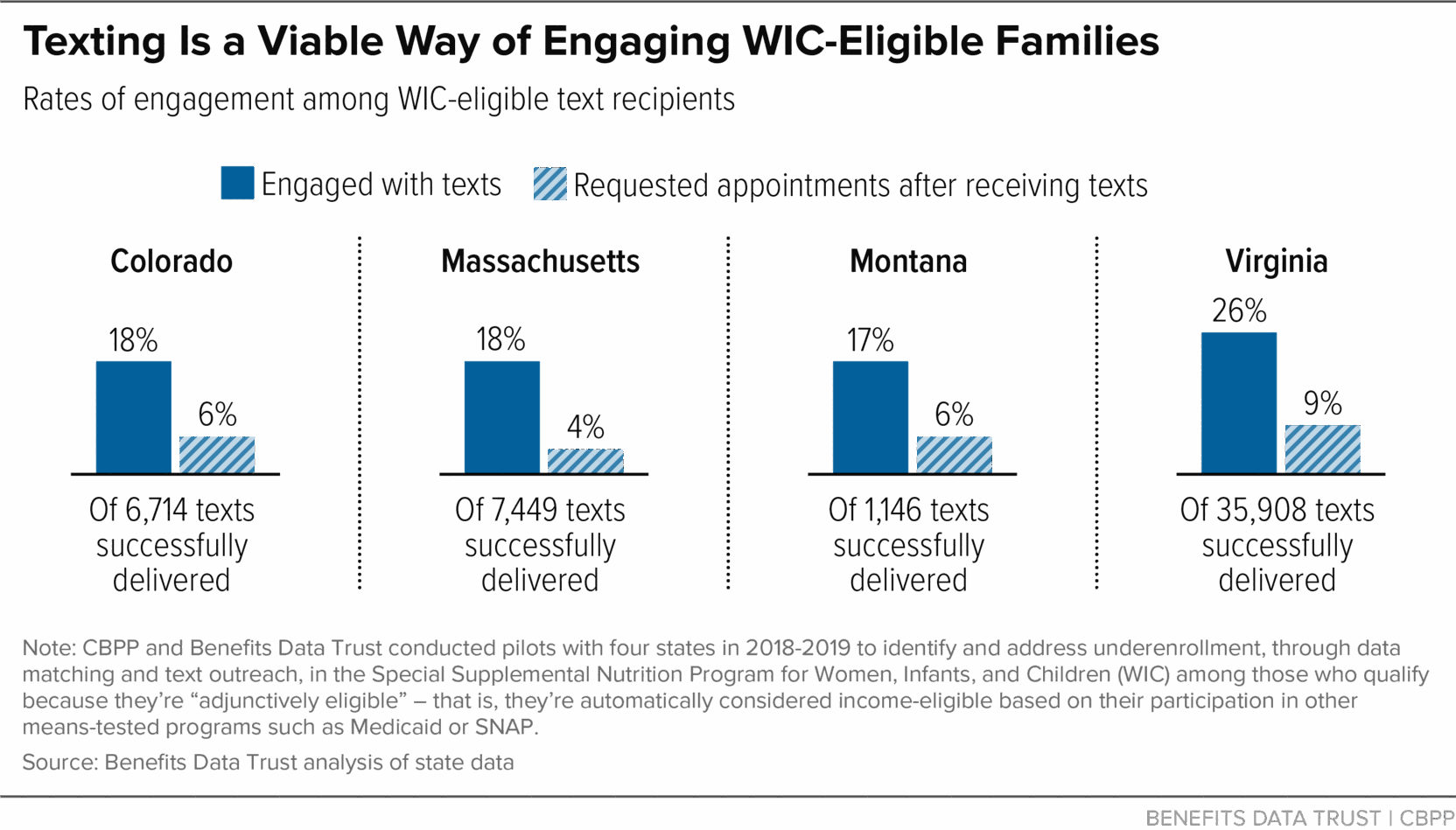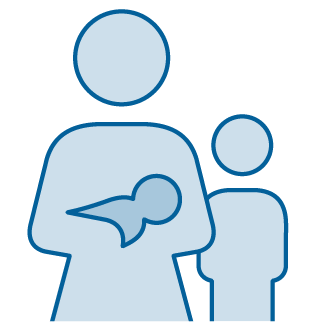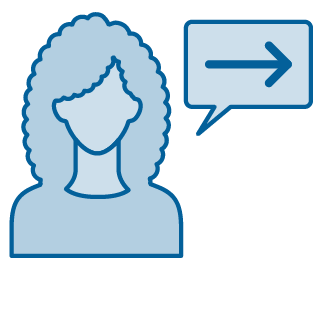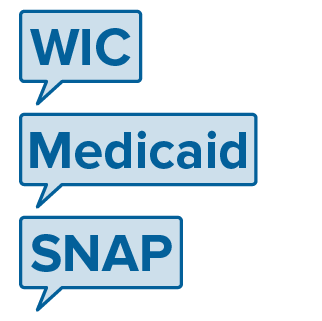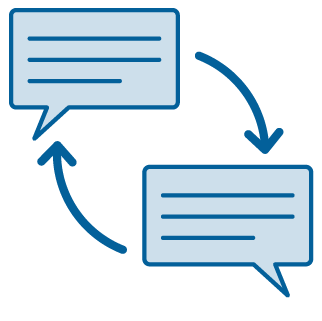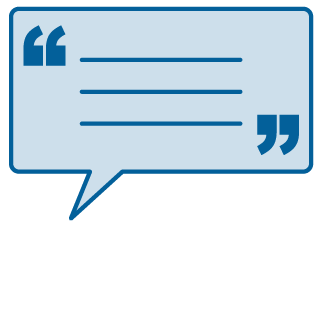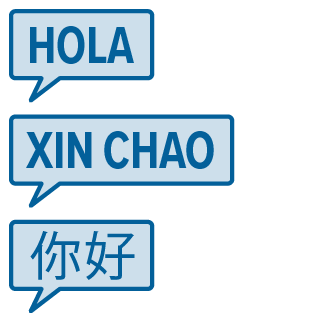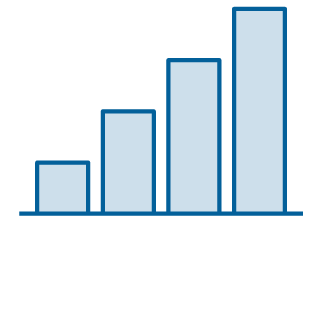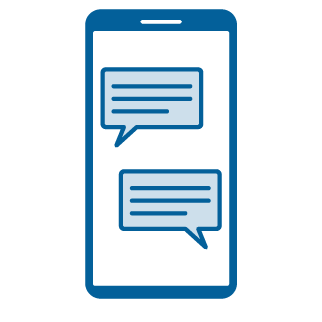Targeted Text Message Outreach Can Increase WIC Enrollment, Pilots Show
Table of Contents
Overview
Lessons Learned From Text Outreach Pilots
How Texting Compares to Mail and Telephone Outreach
Considerations for Launching Text-Based Outreach
Conclusion
Overview
Over the last decade, a declining share of eligible families has participated in the Special Supplemental Nutrition Program for Women, Infants, and Children (WIC). As a result, millions of eligible low-income people are missing out on the diet, health, and developmental benefits associated with participating in WIC.[1] Targeted text messaging offers a promising option to states planning strategies to reach more families eligible for WIC, as several recent pilot programs have shown it may help increase awareness about and enrollment in the program.
The downward trend in participation emerged despite a policy that confers automatic income eligibility for WIC — “adjunctive eligibility” — to families already participating in Medicaid or the Supplemental Nutrition Assistance Program (SNAP).[2] Matching data on Medicaid and SNAP participants with WIC participant data is an effective way to identify WIC-eligible families, and the results of these matches can be used to conduct outreach to families who are not participating in WIC but are known to be eligible because of their participation in another program. This guide on text-based outreach is a companion to a guide that focuses on conducting data matching to identify WIC-eligible families that are not enrolled.[3]
While WIC agencies across the country conduct many forms of outreach campaigns, few are targeted directly to families that are known to be adjunctively eligible for WIC. Similarly, while texting is widely used to communicate with families already participating in WIC to remind them of appointments and to encourage them to complete nutrition education requirements, the use of text messaging as a mode of initial outreach is much less common. Recent state pilots in Colorado, Massachusetts, Montana, and Virginia tested targeted text message outreach and demonstrated that this strategy could have considerable impact on WIC awareness and enrollment.
This paper draws on lessons learned from state WIC outreach pilots and discusses:
- The effectiveness of text message outreach to families who are adjunctively eligible for WIC at reaching families, engaging them, and enrolling them in WIC;
- How texting outreach compares to mail and telephone outreach; and
- Key considerations when developing and launching a new targeted text outreach campaign.
Lessons Learned From Text Outreach Pilots
The Center on Budget and Policy Priorities (CBPP) and Benefits Data Trust (BDT) partnered with Colorado, Massachusetts, Montana, and Virginia to conduct four pilots that tested whether outreach in the form of a series of text messages could impact WIC enrollment for adjunctively eligible families, which are described in detail in an earlier report.[4] Pilots varied in their logistics, such as which program(s) WIC data were matched with, how many texts were sent to families, and the next step for families that received outreach and wanted to enroll in WIC.[5] Across all pilots, we designed “randomized waitlist control trials” where a group of adjunctively eligible families that were not yet enrolled in WIC received targeted outreach text messages — the “intervention” — and a control group of adjunctively eligible families that were not yet enrolled in WIC did not receive these outreach texts.[6] The waitlist models allowed us to conduct text-based outreach to the control group families after the pilots were evaluated. This design enabled us to study the impact of the interventions compared to a baseline while ensuring that all eligible families would eventually receive direct text outreach offering the opportunity to enroll in WIC.
Evaluations of the four pilots generated findings around data matching and outreach lists, effective messaging and responsiveness, and enrollment, which in WIC is referred to as “certification.” While the pilots were exploratory, time-limited, and had several limitations that could be addressed for states implementing this practice over the longer term,[7] they demonstrated that connecting adjunctively eligible families with WIC is a promising strategy for increasing WIC participation. Detailed findings and lessons learned, described below, can inform future targeted text-based outreach initiatives.
Cross-program data matches can identify large numbers of WIC-eligible non-participants, a promising group for targeted outreach interventions.
Table 1 shows how many adjunctively eligible individuals were identified through data matches. This group represents a substantial share of the broader group of people who are eligible for WIC but not participating (a group that includes individuals who are not eligible for or not participating in Medicaid or SNAP). It also represents a substantial share of WIC-eligible Medicaid and SNAP participants, suggesting that there’s work to do to systematically connect Medicaid and SNAP participants to WIC. These families are already known to a state agency and have identified themselves as seeking public benefits, which makes them a promising group for targeted WIC outreach. For example, 20,191 families in Colorado were participating in SNAP and had a child under age 5, which made them eligible for WIC, but they were not enrolled. These 20,191 families represented 44 percent of the families participating in SNAP with a child under 5. If all of them enrolled in WIC, the state’s WIC participation would increase by 28 percent.
| TABLE 1 | |||
|---|---|---|---|
| WIC-Eligible Non-Participants Identified by Data Matches With Other Benefit Programs | |||
| Colorado: SNAP Data Matched With WIC | |||
| Families | As a Share of WIC-Eligible Participants in SNAP | If Enrolled, Potential Increase in WIC Participation | |
| WIC-Eligible But Not Enrolled | 20,191 | 44% | 28% |
| Massachusetts: Medicaid Data (recent enrollees) Matched With WIC | |||
| Families | As a Share of WIC-Eligible Participants in Medicaid (recent enrollees) | If Enrolled, Potential Increase in WIC Participation | |
| WIC-Eligible But Not Enrolled | 30,463 | 77% | 41% |
| Montana: SNAP Data Matched With WIC | |||
| Children | As a Share of WIC-Eligible Participants in SNAP | If Enrolled, Potential Increase in WIC Participation | |
| WIC-Eligible But Not Enrolled | 6,579 | 48% | 54% |
| Virginia: Medicaid, SNAP, TANF, Foster Care Data Matched With WIC | |||
| Families | As a Share of WIC-Eligible Participants in Medicaid, SNAP, TANF, foster care | If Enrolled, Potential Increase in WIC Participation | |
| WIC-Eligible But Not Enrolled | 100,418 | 63% | 98% |
The WIC-eligible families identified by cross-program data matches are largely reachable by texting.
Based on the share of pilot texts that were successfully delivered, the vast majority of WIC-eligible families enrolled in other programs had mobile phones that could receive text messages. Across the four states, close to 80 percent of the texts sent to mobile numbers were successfully delivered, as shown in Figure 1.
Roughly 1 in 5 recipients engaged with text outreach, and about one-third of those individuals requested a WIC appointment.
Although the first attempt at text outreach consistently produced the highest response rate, we found that multiple text outreach attempts elicited continued responses to later messages. Each of the four pilots made multiple attempts to reach the outreach group.[8] We considered any response, other than those opting out of further messages, as engagement with the texts. While responsiveness tends to decline progressively after the first attempt in outreach campaigns, we consistently found that follow-up texts continued to elicit responses. We made up to four attempts at text outreach per household over the course of four weeks in the Colorado, Montana, and Virginia pilots, and up to three in Massachusetts over a three-week period. Though it is possible that additional attempts could have produced results, the response rates significantly dropped at the fourth message.
As Figure 2 illustrates, we found that about 18 percent of recipients engaged with texts in Colorado, Massachusetts, and Montana — and about one-third of those requested a WIC appointment — while in Virginia 26 percent engaged with texts, and about one-third of those (9 percent) requested a WIC appointment.
The process each state followed to certify the pilot group drove variations in text message content. For example, in most states, the outreach message asked recipients to reply “1” or “Yes” to receive a call from WIC staff to schedule a certification appointment; in Massachusetts, some outreach recipients received an option to follow a link to an online form to enter contact information and receive a call from WIC staff.
Variation in responsiveness across states was likely related to multiple factors, including the program in which the text recipient was originally enrolled (SNAP, Medicaid, another program, or a combination of programs) and the messaging used in text outreach.[9]
WIC & Medicaid: Targeted text outreach can positively impact WIC certification rates for adjunctively eligible families participating in Medicaid. Strong certification outcomes were also observed for families enrolled in more than one program.
Evidence from the pilots in Massachusetts and Virginia demonstrated that outreach targeted to Medicaid enrollees and families already participating in more than one economic security program can increase the chances that these groups become certified for WIC.[10]
- The Massachusetts pilot targeted only recent Medicaid enrollees. Those who received text messages during the pilot were 36 percent more likely to become certified than those who did not.
- Virginia families participating in Medicaid that received text outreach messages were 5 percent more likely to be certified for WIC than Medicaid participants who did not.
- Virginians enrolled in more than one of the programs with which WIC data were matched were more likely to certify during the pilot than those enrolled in any single program. These families were about 9 percent more likely to become certified for WIC than families that were enrolled in more than one program and did not receive texts.
WIC & SNAP: SNAP participants were not more likely to enroll in WIC as a result of targeted text message outreach, which warrants further exploration into how to effectively engage these families.
In the Colorado, Montana, and Virginia pilots, SNAP households consistently did not experience an increase in WIC certifications in the intervention groups compared to the control groups.
- In Colorado, where outreach was based only on a SNAP data match, the intervention group certified at roughly the same rate (6.1 percent) as the control group (6.3 percent).
- In Montana and Virginia, evaluations showed that SNAP participants were less likely to enroll in WIC after receiving outreach.
While texting is one potential avenue for targeted outreach, other models could be explored, including using text outreach in combination with mail, email, or phone calls. In addition to testing different channels for outreach, advanced testing and analysis of messaging used in outreach could help reveal the optimal language for engaging varying demographics of WIC-eligible non-participating families.[11]
How Texting Compares to Mail and Telephone Outreach
When considering whether to launch text-based targeted outreach for WIC, state and local agencies may need to assess whether texting is preferable to approaches they have recently tried, such as mail or telephone outreach. Considering the key factors described in this section can help WIC agencies determine whether text, mail, or telephone outreach best suits their capabilities and goals. (See Table 2.) These forms of outreach can also be used in combination. For example, BDT has used text messages to follow up on mailings to increase responsiveness. Measuring response rates before adding texts to the outreach strategy and then again after, the BDT team has observed that response rates increase by 50 percent using combination tactics like this.
| TABLE 2 | ||
|---|---|---|
| Considerations for Different Outreach Media | ||
| = Text Outreach | = Mail Outreach | = Phone Outreach |
| What Is the Cost? | ||
| Relatively low cost | Relatively high cost | Very high cost |
| Which Data Fields Are Essential for Delivering Outreach? | ||
| Mobile phone number | Address | Phone number (mobile or landline) |
| What Initial Set-up Is Needed? | ||
|
A texting platform or partner to send texts Software to look up phone numbers and determine whether they are mobile rather than landlines |
Mailing supplies and equipment or a mail vendor The higher the quantity and frequency of mailings, the more sophisticated operations need to be in terms of data and technological capacity |
Contact center infrastructure is highly beneficial Individual staff time to make outreach calls |
| FROM THE FIELD: NEW HAMPSHIRE WIC | ||
| WIC staff has read-only access to SNAP data. Local WIC staff conduct outreach via telephone. While this approach is labor-intensive for some local clinic staff, the WIC team believes the results have warranted the effort. New Hampshire has observed that it slowed its participation decline when they conducted concentrated and targeted phone-based outreach efforts. | ||
| How Much Maintenance Is Required for Ongoing Operations? | ||
| Texting can be set up to run in the background as an ongoing process with minimal maintenance | Ongoing mail outreach can be low maintenance as long as regular quality checks are implemented, especially if they can be automated | For results to be steady and reliable, phone outreach requires consistent, dedicated staff time |
| How Do We Know If It Reaches Recipients? | ||
| Most text software produces delivery and response reports with minimal manual effort | Mail can be tracked by the USPS to ensure successful delivery | It can be difficult to monitor outcomes automatically unless the calls are managed through a Management Information System. Otherwise, staff needs to track calls and outcomes. |
| FROM THE FIELD: BENEFITS DATA TRUST | ||
|
BDT operates data-driven mail and text message outreach programs to connect eligible families to benefits like Medicaid, SNAP, and WIC. At BDT’s Philadelphia-based contact center, BDT staff provide phone-based benefits screening and application assistance to individuals across six states.[12] Before sending mail outreach, BDT’s mail vendor runs a National Change of Address report to ensure addresses are valid. This step has helped ensure that 98 percent of mail arrives successfully. BDT tracks the efficacy of mail outreach using a unique ID number that is included on all outreach letters and is linked to client portfolios in the organization’s benefits application assistance tool. This allows BDT to measure the share of outreach recipients who call its contact center after receiving mail outreach and to continue to track clients to monitor progress through screening, application, and enrollment. |
||
| How Quickly Do Recipients Tend to Respond? | ||
| Text outreach yields much quicker responses from recipients, compared to mail | Because of the nature of mailing and delivery times, this outreach method yields the slowest responses | If a person responds to phone outreach, it is most likely that they will do so immediately by answering the call (rather than calling back after missing the call) |
| FROM THE FIELD: WIC TEXT OUTREACH PILOTS | ||
| In the pilots, we observed that most responses to a text outreach came the day the text was delivered, and almost all responses from a text outreach would come in within four days after delivery. These observations are aligned with BDT’s experience with text outreach for other projects. | ||
| FROM THE FIELD: BENEFITS DATA TRUST | ||
| Before the COVID-19 pandemic, BDT observed most responses from mailings about a week after they were sent. During the pandemic, likely due to significant national mail delays, BDT observed responses from mailings two to three weeks after letters were sent. | ||
| Can It Be Adapted Based on Staff Capacity? | ||
| The number of texts sent each week can easily be adjusted based on staff capacity | The number of mailings sent each week can be adjusted based on staff capacity, but slower response times might result in a delay in the change to workload | The number of calls each week can easily be adjusted based on staff capacity |
| Can It Be Adapted If It Doesn’t Generate the Desired Level of Response? | ||
| The content of the messages or how often texts are sent can be changed | The content of the outreach can be changed, for example by revising language and framing, or the graphic design of the mailing can be changed, for example by changing the envelope design, graphics, logos, or other visual elements | The script can be modified |
| What Response Might This Form of Outreach Yield? | ||
| People engage with text outreach at rates higher than mail and phone outreach | While targeted mail outreach response rates are lower than texts, they tend to be much higher than phone outreach | While some states have found this strategy valuable, BDT no longer uses this outreach strategy because it observed very low response rates from outbound calls |
| FROM THE FIELD: WIC TEXT OUTREACH PILOTS | ||
| In the pilots, 17 percent to 26 percent of individuals receiving WIC outreach texts responded, and of those responding, 22 percent to 35 percent requested appointments. | ||
| FROM THE FIELD: WASHINGTON STATE WIC | ||
| In 2015 and 2016, Washington State WIC conducted targeted mail outreach campaigns to families participating in Medicaid with children under age 5 that were not yet participating in WIC. Across these campaigns, Washington WIC measured response rates over 6 percent. Mailings produced notable spikes in calls to WIC agencies, confirming that the outreach generated interest. | ||
| FROM THE FIELD: BENEFITS DATA TRUST | ||
| On average, BDT expects 10 percent to 15 percent of individuals who receive targeted mail outreach to call its contact center, and around 50 percent to 60 percent of those calls to result in benefit applications. | ||
Considerations for Launching Text-Based Outreach
By considering the key questions and issues described in this section before launching a text-based outreach initiative or modernizing another type of outreach initiative, state WIC agencies can develop a plan that is well suited to their staff as well as to the families they are trying to enroll in WIC.
Who will receive WIC outreach?Individuals participating in Medicaid, SNAP, or the Temporary Assistance for Needy Families (TANF) cash assistance program, and children in foster care could be included, depending on the available data and the number of applicants WIC staff can manage. While the pilots described above resulted in stronger certification outcomes for families originally enrolled in Medicaid than for those originally enrolled in just SNAP, this does not mean that SNAP families should be excluded from targeted WIC outreach. Rather, this outcome highlights the need to understand the group being targeted with outreach in advance, which can help determine messaging, outreach method, and other logistics related to launching the outreach campaign. If outreach to adjunctively eligible families is going to be conducted regularly, it will also be important to decide how often to conduct outreach to the same family if the family does not enroll in WIC after an outreach campaign. To avoid repeatedly contacting a family that is not interested in WIC, a state could match WIC data against only new Medicaid or SNAP enrollees, as Massachusetts did. Alternatively, once data matching has been conducted, a state could remove from the outreach pool anyone who received outreach recently, for example in the last six months. |
|
Who will send the texts?Multiple arrangements may be feasible depending on existing infrastructure, and there may be advantages to each option. Potential approaches include: The state WIC agency sends text outreach messages. There are several key advantages to the state agency deploying outreach. First, some WIC agencies already have statewide texting capabilities and only need to import a new list of contact information from the new data source to launch outreach. In addition, this approach enables uniformity across the state, which has implications for equity and evaluability of the outreach campaign. Lastly, this arrangement may be more sustainable than approaches that rely on multiple parties. This is the approach Massachusetts and Montana used for their recent data matching and targeted outreach pilots and continue to use. Local WIC agencies send text outreach messages. In some cases, local WIC agencies already use texting as a regular form of communication with WIC participants. It may be possible to adapt these processes to include targeted text outreach. A partner agency, such as those administering Medicaid or SNAP in a state, sends text outreach messages about WIC. The agency administering Medicaid, SNAP, or other means-tested programs might have greater capacity to deploy text outreach. In addition, recipients might be more comfortable receiving a text message from a program they are already participating in. One potential disadvantage of this approach is that it could limit the ability of WIC staff to design the details of the outreach, depending on the amount of coordination between agencies. A third-party contractor sends text outreach messages for WIC. This approach has similar advantages to the state WIC agency deploying outreach in terms of uniformity, equity, and evaluability. It also offers an option that can be employed by states that do not yet have statewide texting capacity. In addition, this approach may be easier to implement if a state is interested in testing a new approach but is hindered by staff availability or competing priorities. In the Colorado and Virginia pilots, BDT conducted the texting on behalf of the state WIC agencies. Under this arrangement, it is important to note that data-sharing agreements must be written to include the third-party contractor. Depending on the third party’s relationship to the state WIC agency, this approach could be less sustainable than a state agency sending the text messages. |
|
Who will be the messenger?In addition to deciding who will actually send the texts, states will need to determine in advance who the texts will appear to come from — the messenger. The messenger does not necessarily need to be the same as where texts are physically sent from. For example, texts could be identified as coming from WIC or from the Medicaid or SNAP agencies, but actually deployed by a third-party vendor. In some outreach campaigns, a name is associated with text outreach; for example, a text may read “Hi! This is Dorothy from WIC.” This helps to establish credibility and trust with the text outreach recipient and a personable tone. By considering the group receiving outreach and who that group already knows, trusts, and has a relationship with, the state will be able to choose a trusted messenger. For example, if the outreach group is already enrolled in SNAP, but not WIC, then using the SNAP agency as the messenger may establish greater trust with that group. Another key consideration regarding the messenger is the phone number that texts are deployed from. There are several options to consider, including “short codes,” “long codes,” and toll-free numbers. A short code is a five- or six-digit number, and a long code is a normal ten-digit phone number. Toll-free numbers are generally “long code” 800-numbers.[13] Each option has advantages and disadvantages. For example, a long code allows for an area code specific to the state in which the texts are being sent. States exploring these options will need to consider the text platform being used and the type of campaign being designed. |
|
Will texts be automated or sent manually?While automating text outreach requires upfront work, such as programming software and testing the outreach plan, over time an automated process is likely to be more efficient than manual outreach. Sending texts manually allows messaging to be more tailored or even personalized but requires much more staff time. |
|
Will outreach recipients be able to respond to the texts they receive?One-way texting is typically automated and sends a message to the outreach pool but does not field responses. Two-way texting can also be automated or may take the form of a manual texting exchange. In automated two-way texting, a series of engagements is mapped out, and responses are pre-programmed based on suggested responses to the outreach messages. The capacity of the texting platform being used might determine the approach, but if both options are available, two-way texting offers the advantages of allowing for multiple interactions, potentially feeling more engaging to the recipient, and allowing for a wider variety of possible next steps. For example, two-way texting allows for a recipient to request a call to schedule a certification appointment. |
|
What kind of messaging will be used in the texts, and how will it be decided?The following considerations for crafting messages for text outreach reflect experience in the recent pilot projects as well as established research. Tested behavioral science principles can help inform text outreach messaging. When designing outreach for WIC, it is important to keep in mind the context of chronic scarcity, a state of perpetually lacking key resources such as time, food, or money.[14] Considering the constant strain on people’s resources and time when creating outreach messages highlights the importance of message framing. Given the everyday resource constraints that those receiving outreach endure, framing outreach messaging in a way that makes the next step, and the WIC certification process as a whole, feel manageable is more likely to be effective. For example, some human-centered text language that acknowledges constraints might say:
Including dollar values in outreach text messages may increase response rates. The Colorado pilot evaluation showed an uptick in responses after a message that mentioned a dollar figure for the value of WIC food benefits. This was the third attempt to reach adjunctively eligible Coloradans. The first two outreach messages focused on the health and nutrition benefits of WIC. The uptick in responses at the third attempt is notable because response rates usually progressively decline with each additional message. Although we observed this trend, the pilots were not designed to conduct formal message tests. Testing the effectiveness of different message content — in addition to the number, order, and timing of messages — is ripe for further exploration. Various populations may respond differently to outreach messaging and approaches. For example, we observed different response results from the Montana outreach pool than others. The Montana group did not respond as strongly to texts including dollar figures, and subsequent attempts after the first outreach text elicited very few responses. These findings highlight the importance of tailoring messaging to the recipients and involving local staff in messaging decisions. |
|
In which language(s) will texts be sent?Data matches may be able to include the preferred written or primary language of outreach recipients. States can consider how they might deliver text messages in each family’s preferred language. If this is not possible, as was the case in the pilots, there may be alternative ways of reaching families who speak and read in languages in which texts aren’t sent. For example, the message could include a link to a website that can be translated or offer a phone number to connect callers to translation services. It is important to consider the language in which the message will be sent before drafting — an English text may not have the same connotations or concision when translated. For this reason, it would be beneficial for someone, such as a professional translator fluent in each language in which the texts will be sent, to participate in drafting and reviewing all outreach messages. |
|
What will be the next step for recipients who wish to enroll in WIC?Ideally, if a recipient of a text outreach message expresses interest in enrolling in WIC, the next step would be taken by WIC staff to ensure that the certification process gets underway. This next step could be a call or text from a statewide call center or from a local WIC agency to begin the certification process or schedule a certification appointment. Alternatively, states that already have an online form that collects basic information can include a link to this form so that WIC staff can follow up. This may be a simpler process if WIC staff already have mechanisms in place to respond to submissions via these online forms. To allow for monitoring the results of the outreach, states can use a distinct link for the form sent via outreach text (rather than sharing the general link). During its pilot, Massachusetts split its outreach pool into two groups: one group was offered a call to schedule an appointment, while the other was sent the link to an existing online form that could be used to request a call. Even though the latter group had to take an extra step to receive a call, the certification results were comparable for the two groups. This suggests that basing the decision on the approach that is less burdensome for staff may not reduce effectiveness. |
|
How will outreach engagement and certification outcomes be monitored and evaluated?Determining what needs to be learned from an outreach campaign at the outset can help inform key decisions, such as reporting structures or even text platforms. In the pilots, it was important to track responses to text outreach not only to set up WIC appointments for families who requested them, but also to monitor which outreach message they responded to. We were also interested in tracking how many outreach recipients never responded, opted out of texting, or responded requesting more information about WIC. |
|
What would make this a sustainable outreach model?Targeted, text-based outreach strategies can be built upon and adapted. Massachusetts and Montana have continued data matching and targeted text outreach after the pilots were complete, and both states elected to include data from additional programs. This demonstrates that data matching and text-based outreach can be employed in ongoing operations. States that have operationalized this practice report that once these processes are implemented and incorporated into existing agency procedures, they are cost-effective and relatively easy to administer. |
Conclusion
Texting is an effective method of modernizing WIC outreach and has several key benefits over telephone or mail outreach, including cost-effectiveness and ease of operation once established. There is still a lot to learn about the best ways of engaging and certifying adjunctively eligible families — both via text message and through alternate modes of outreach. The targeted text outreach model tested in state pilots is a low-cost and low-maintenance approach, therefore, states can set it up and continuously monitor outcomes to make adjustments while exploring other methods and improving messaging.
End Notes
[1] Steven Carlson and Zoë Neuberger, “WIC Works: Addressing the Nutrition and Health Needs of Low-Income Families for More Than Four Decades,” CBPP, updated January 27, 2021, www.cbpp.org/wicworks.
[2] Individuals receiving Medicaid, SNAP, and Temporary Assistance for Needy Families cash assistance (TANF) are considered income-eligible for WIC and do not need to document their income to be enrolled. For more details about the adjunctive eligibility rules, see 7. C.F.R. § 246.7 (d)(2)(vi).
[3] Jess Maneely and Zoë Neuberger, “Matching Data Across Programs Can Increase WIC Enrollment,” Benefits Data Trust and Center on Budget and Policy Priorities, April 27, 2021, https://bdtrust.org/new-report-matching-data-across-programs-can-increase-wic-enrollment/ and https://www.cbpp.org/wicdatamatching.
[4] Jess Maneely and Zoë Neuberger, “Using Data Matching and Targeted Outreach to Enroll Families With Young Children in WIC: Lessons Learned From State Pilots,” Benefits Data Trust and Center on Budget and Policy Priorities, January 5, 2021, https://bdtrust.org/cbpp-bdt-case-study.pdf and www.cbpp.org/wicpilotreport.
[5] The logistical details of each state’s pilot are described in the Appendix to Maneely and Neuberger, “Using Data Matching and Targeted Outreach to Enroll Families With Young Children in WIC: Lessons Learned From State Pilots.”
[6] During the pilots, families in the control group would have received any other kind of outreach being conducted by WIC at the time. Both groups would be treated comparably in any other outreach initiatives carried out by their state or local WIC agencies.
[7] For example, the texts in the initial pilots were sent in English, but they might be more effective if translated into the preferred reading language of the family receiving the outreach.
[8] Each state’s outreach plan is described in the Appendix to Maneely and Neuberger, “Using Data Matching and Targeted Outreach to Enroll Families With Young Children in WIC: Lessons Learned From State Pilots.”
[9] For more information on the impact of the matched program and messaging, see Maneely and Neuberger, “Using Data Matching and Targeted Outreach to Enroll Families With Young Children in WIC: Lessons Learned From State Pilots.”
[10] For further discussion of certification results, see Table 3, Maneely and Neuberger, “Using Data Matching and Targeted Outreach to Enroll Families With Young Children in WIC: Lessons Learned From State Pilots.”
[11] One way to test the effectiveness of different messages is by conducting an A/B test — also known as “split” or “bucket” tests. This kind of test can be used to compare two versions of an outreach message to figure out which one performs better. Analyses of these tests could offer insights on how different messaging resonates with various demographics. Examples of varying demographics of WIC-eligible families include, but are not limited to, age of children or adults in the household, pregnancy status, postpartum and breastfeeding statuses, race, ethnicity, and geographic location.
[12] Benefits Data Trust, “Where We Work,” https://bdtrust.org/where-we-work/.
[13] For more information on short codes and long codes, see Alfredo Salked, “SMS Short Codes vs SMS Long Codes: Which One Is Right for You?” https://simpletexting.com/short-codes-vs-long-codes/.
[14] ideas42 has produced helpful resources about chronic scarcity including “Poverty Interrupted: Applying Behavioral Science to the Context of Chronic Scarcity,” May 2015, http://www.ideas42.org/wp-content/uploads/2015/05/I42_PovertyWhitePaper_Digital_FINAL-1.pdf.
